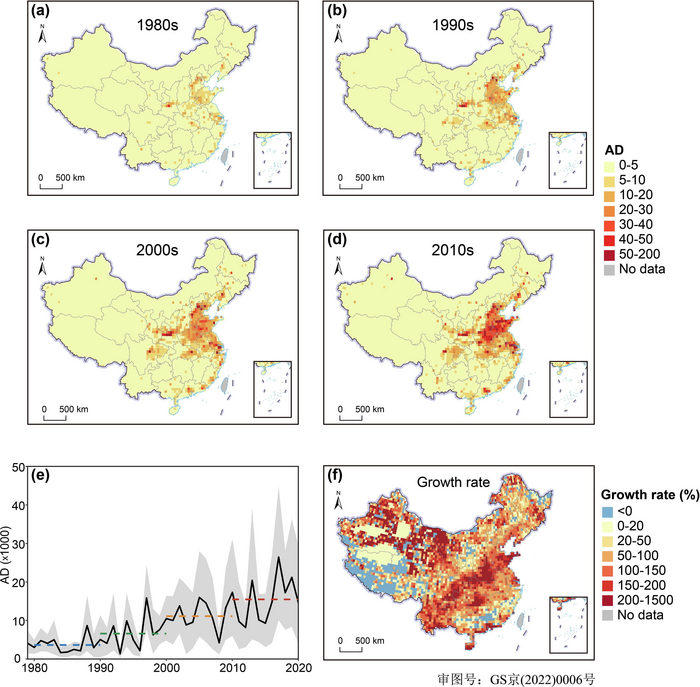Heatwaves impose a high disease burden by raising the risk of death and illness, which has been increased by climate change around the world.

Health risks of heatwaves were characterized by rapid growth, nonlinear temporal evolution, and extremity. Nationally, the number of annual attributable deaths was an average of 3,679 in the 1980s but increased to 15,500 in the 2010s. Taking a 5-year moving average, it took 2.8 years for every increase of 1,000 annual heatwave-related deaths from the 1980s to 2000s, but just one year for the same increase to occur in the 2010s. Also, the attributable deaths reached the highest record of 26,486 in 2017, followed by the second at 21,219 in 2019 and the third at 20,431 in 2013. Regionally, east and central China had the largest number of attributable deaths in general, accounting for more than 50% of deaths nationwide. Among the provinces, deaths ascribed to heatwaves were highest in Shandong, followed by Henan, Hebei, and Jiangsu. a-d, The number of attributable deaths to heatwaves in the grid during the past four decades. e, Attributable deaths to heatwaves in China from 1979 to 2020. The solid line shows the estimated number of attributable deaths to heatwaves; grey areas show the 95% confidence intervals; the horizontal dashed line shows the average annual deaths in the 1980s, 1990s, 2000s, and 2010s. f, Changes in attributable deaths to heatwaves in 2010s relative to the baseline period of 1980-2009. AD, attributable deaths to heatwaves. The Map NO. is GS(2019)1673. Art by Huiqi Chen. Image Credit: ©Science China Press
In China, evidence documenting the impact of heatwaves on the number of attributable deaths, spatiotemporal variations, and their driving factors is still limited, hindering the understanding of dangerous heatwaves.
Dr Cunrui Huang, Vanke School of Public Health, Tsinghua University
Dr Cunrui Huang, along with group member Chen and meteorological specialist Zhao, set out to determine the regional and temporal trends of heatwave-related mortality in China over the last four decades. The researchers used event-based attributable loss prediction to calculate the gridded attributable fatalities.
The team discovered that climate change health concerns were characterized by rapid increase, nonlinear evolution, and extremes. Heatwave-related mortality in China has grown fourfold in the last four decades, with rising patterns becoming more evident in the last decade but minor variability between individual years.
East and central China had the highest number of attributable deaths overall, causing more than half of all deaths in the country. Shandong had the highest heat-related deaths, followed by Henan, Hebei, and Jiangsu.
The scientists also broke down the elements that contributed to changes in attributable deaths. Heatwave-related deaths in China have grown over time, mainly owing to increased heatwave exposure, accompanied by population expansion, population aging, and rising baseline mortality.
Interestingly, population aging has become a more significant factor in attributable mortality over time. This research could help policymakers establish effective climate mitigation and adaptation policies in response to rising heatwaves, particularly for the most susceptible older population.
Journal Reference:
Chen, H., et al. (2022) Spatiotemporal variation of mortality burden attributable to heatwaves in China, 1979–2020. Science Bulletin. doi.org/10.1016/j.scib.2022.05.006.